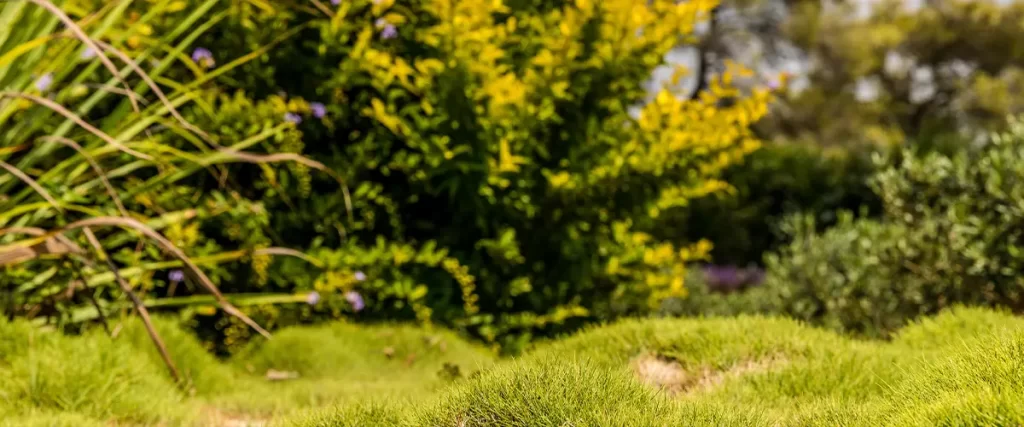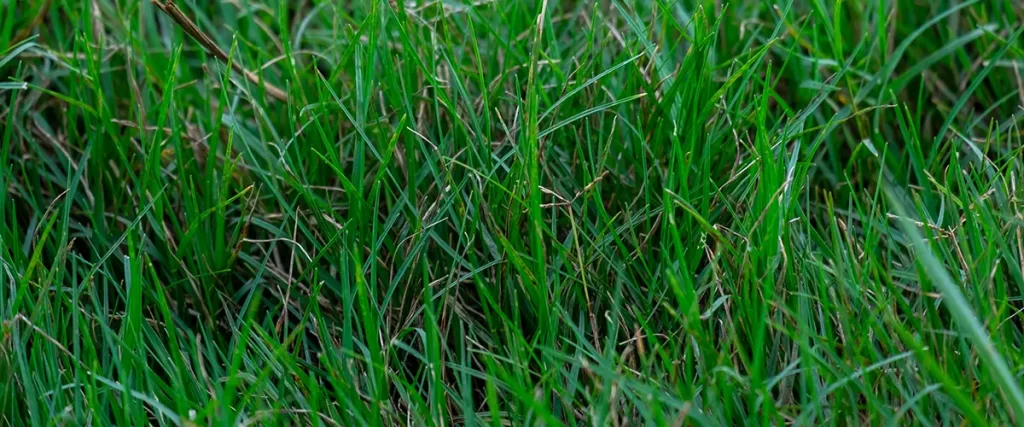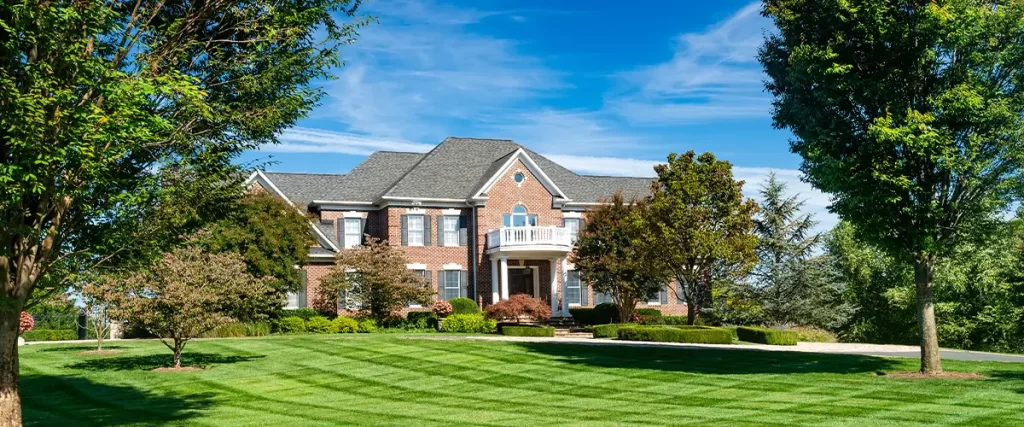If you’re thinking about getting a new lawn or just improving the one you have, you’ve probably heard about Zoysia and Bermuda grass. These two types of grass are some of the most popular choices for warm-season lawns.
They both thrive in sunny climates, grow thick and lush, and can handle a lot of foot traffic. But they do have some key differences, and choosing the right one depends on what you want from your lawn.

Maintenance and Growth Speed
The first thing to think about is how much maintenance you’re willing to do. If you love spending time taking care of your yard and don’t mind mowing frequently, Bermuda grass might be a great fit. It grows fast, spreads quickly, and can handle heavy wear and tear. That’s why it’s often used on golf courses and sports fields.
But if you want something that grows a little slower and needs less mowing, Zoysia could be the better option. It has a dense, carpet-like texture and doesn’t need as much upkeep.
Sunlight and Shade Tolerance
Another important factor is sunlight. Bermuda grass loves full sun and struggles in shady areas. If your yard gets direct sunlight for most of the day, Bermuda will thrive.
But if you have trees or shaded spots, Zoysia is a better choice. It can handle partial shade much better than Bermuda, so it won’t thin out as quickly in areas that don’t get as much light.
Drought Tolerance
When it comes to drought tolerance, both grasses do well in hot, dry conditions, but Bermuda is the winner in this category. It has deep roots and can survive long periods without rain, bouncing back quickly when it finally gets water.
Zoysia is also drought-tolerant, but it takes longer to recover if it turns brown during dry spells. If you live in an area with long periods of heat and little rain, Bermuda might be the safer choice.

Cold Tolerance
Cold tolerance is another big difference. While both are warm-season grasses, Zoysia can handle cooler temperatures better than Bermuda. When winter hits, Bermuda grass turns brown and goes dormant quickly, and it stays that way until temperatures warm up again.
Zoysia also goes dormant, but it holds onto its color a little longer and comes back to life sooner in the spring. If you live in a place with mild winters, this may not matter as much. But if your area gets chilly, Zoysia will likely look better for a longer period.
Weed Control
If you’re worried about weeds, Zoysia might be the better choice. Its dense growth makes it harder for weeds to take over. Bermuda, on the other hand, spreads fast but isn’t as thick, so weeds can sometimes sneak through. That means you may have to put in more effort to keep Bermuda lawns weed-free.
Soil Type and Adaptability
Soil type is another thing to consider. Bermuda grass does best in well-draining soil with good airflow. It struggles in compacted or heavy clay soil because its roots don’t like to sit in water. Zoysia is more adaptable and can grow in a wider range of soil types, including sandy, loamy, or even clay-heavy soils. If you’re not sure what type of soil you have, Zoysia might be the safer bet.
Growth and Spreading Behavior
One big difference between these grasses is how they spread. Bermuda grass grows aggressively through both underground rhizomes and above-ground stolons. That means it spreads fast, which is great if you want a lawn that fills in quickly.
But it also means it can invade flower beds, sidewalks, and even your neighbor’s yard if you don’t keep it in check. Zoysia spreads more slowly, mostly through underground rhizomes. It won’t take over your yard as fast, which can be good if you want more control over where it grows.

Texture and Softness
Another thing to think about is how soft you want your lawn to feel. Zoysia has a finer texture and creates a thick, cushiony lawn that feels great under bare feet. Bermuda has a coarser texture, which can feel a little rougher. If you have kids who love to run around barefoot, or if you just like walking around outside, Zoysia might be the more comfortable choice.
Seed vs. Sod
If you plan to install your lawn from sod, both Zoysia and Bermuda are available in sod form, so you can get a mature lawn instantly. But if you want to plant from seed, Bermuda is much easier and cheaper to grow from seed. Zoysia is slow-growing and difficult to establish from seed, so it’s usually best to install it as sod or plugs. If you’re on a budget and don’t mind waiting a little longer for your lawn to fill in, Bermuda could be a better option.
Pest and Disease Resistance
Pest and disease resistance is also something to keep in mind. Bermuda grass is tough and can handle a lot, but it’s more prone to pests like armyworms and nematodes. Zoysia is more resistant to pests but can sometimes develop fungus problems, especially in humid conditions.
Regular maintenance, including proper watering and mowing, can help prevent these issues, but it’s something to be aware of when choosing between the two.
Cost
When it comes to cost, Bermuda grass is generally the cheaper option. Since it grows fast and can be easily planted from seed, it’s more affordable to install.
Zoysia is more expensive, especially if you’re using sod or plugs, but its low maintenance and durability can make it worth the investment in the long run.
Which One Is Better?
So which one is better? It really depends on what you need. If you want a fast-growing, drought-tolerant lawn that can handle a lot of traffic, Bermuda is a great choice. It’s perfect for active yards, sports fields, and areas with full sun.
But if you want a softer, denser, and more low-maintenance lawn that can handle some shade, Zoysia might be the better option.
Zoysia vs Bermuda: FAQs
Which grass is better for high-traffic areas?
Bermuda grass is better for high-traffic areas because it grows fast and recovers quickly from damage.
Does Bermuda grass or Zoysia need more mowing?
Bermuda grass needs more mowing because it grows faster. Zoysia grows more slowly, so you won’t need to mow as often.
Which grass is better for shady yards?
Zoysia is better for shady areas because it can tolerate partial shade, while Bermuda needs full sun to thrive.
Is Bermuda or Zoysia better for drought resistance?
Bermuda grass is better at handling drought and bounces back quickly after dry periods. Zoysia is drought-tolerant but takes longer to recover.
Which grass is softer underfoot?
Zoysia has a finer texture and feels softer under bare feet, while Bermuda has a coarser feel.
Can I grow Zoysia or Bermuda from seed?
Bermuda is easier and cheaper to grow from seed. Zoysia is slow to establish from seed, so sod or plugs are usually the better option.
Which grass is easier to maintain?
Zoysia is easier to maintain because it grows slowly and has fewer weed problems. Bermuda grows fast and needs more frequent mowing and care.

Trust The Pros
If you’re unsure where to start with your landscape design, it’s always smart to talk to a professional. At Easy Green Landscaping, we don’t just design—we bring your outdoor vision to life.
Whether you’re planning a full backyard transformation or adding new features, we’ll help you create a space you’ll love. Contact Easy Green Landscaping today at (303) 766-3304 and let’s build your dream yard in Englewood, CO!
